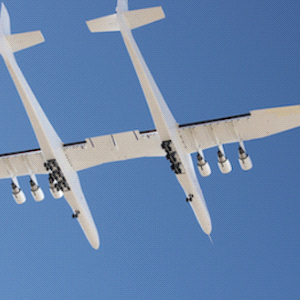Aerospace and Defence Composites Market for thermoplastic composites retains momentum
Amsterdam, NL - April 19, 2022 -
The market penetration rate for thermoplastic is particularly increasing within the aviation sector. The recyclable properties of this material allow thermoplastics to be shaped even after the component has been designed. Hence retrofitting and system integration is easier in this case.
Moreover, the Aerospace and Defense Platforms are moving towards light maneuverable technologies to increase tactical mobility. As the weight of the vehicle reduces the propulsion required also decreases significantly. Thus the change in a material affects the fuel consumption and the carbon emissions associated with the vehicle system.
Composite Nanotechnology is another key technical advancement that is used within the aerospace and defense sector. Carbon nanotubes are also known as carbon nanomaterials are the key constituent element in this case.
Composite nanocomposites are used for their mechanical properties in addition to their application as additives and coatings. This material can alter properties like chemical conductivity, electrical conductivity, as well as barrier properties. Carbon nanocomposites can also be used as an anti-static material within the automotive sector.
The use of technologies like Large Scale Additive Manufacturing is one of the key factors that promote the use of composites within this sector. The application of this technology reduces the number of components to be manufactured as well as the assembly time associate with the structure. The use of large-scale additive manufacturing hereafter promotes the use of composites for the construction of large components to be used in the aerospace and defense vertical.
The integration of technologies like Computer-Aided Design is anticipated to boost the market growth since it promotes precision in terms of both design and fabrication. All additive fabrication techniques commence with CAD design. The technology allows the printing of the material with high precision to yield high-quality end-products.
Om studying the overall market for the Aerospace and Defense Composites Vertical, it is seen that the market is poised to grow with a CAGR of 8.33%. In the year 2020, the Aerospace and Defense Composites Market generated a revenue of US$50.33 bn. The total market is anticipated to achieve a value of US$119.15 bn. The regional landscaping for this market indicates that North America accounts for roughly 40% of the market revenue.
The Commerical aviation segment is one of the key contributors to the value chain for this market. Some of the key commercial aircraft models that make use of composites include Boeing 737 Max, Boeing 777, Airbus A350, etc. Roughly 53% by weight of Airbus 350 is made up of composites. Furthermore, 12% of Boeing 777 (by airframe mass) is fabricated using composites. Additionally, Boron Reinforced Epoxy composites are used to fabricate the skin of the U.S. F14 and F15 fighters. Conclusively, the use of composite materials in components like wings and fuselages is expected to boost market growth.
During the initial stages, the amount of composites used in the structural framework for an aircraft was lesser. For instance, the F15 aircraft was composed of 2% composites (by weight). However, the F18 model makes use of 19% composites and the F22 model is composed of 24% composites.
Carbon Reinforced Fiber Composite is one of the key material segments within the market. However, the high cost of the material is one of the key factors that limit the growth of this market.
Witin the UAV market.thermoset plastics account for a major share within this market. UAVs are also composed of epoxy resins in addition to thermoplastics. The use of this technology reduces the weight of the UAVs by roughly 14-45% as compared to aluminum.

Scaled Composites Model 351 Stratolaunch
Related Studies
